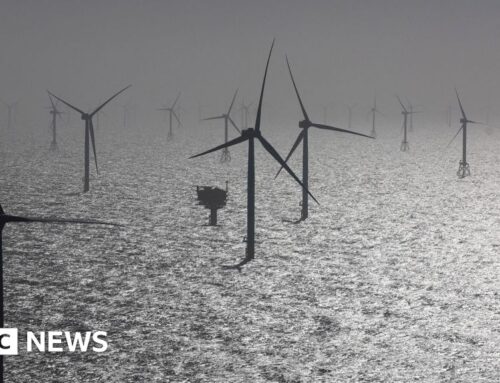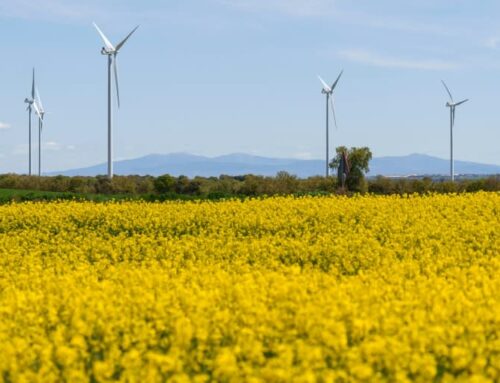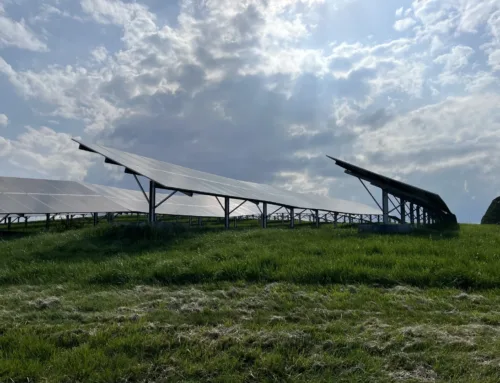Saving the environment: It’s complicated
April 30, 2025
The atmosphere on the turf is growing toxic. Private interests trying to do something about the problem are swinging and missing at every turn. Federal regulators are powerless. Local officials are preoccupied with other challenges. And so the numbers get scarier and scarier.
[https://newspack-coloradosun.s3.amazonaws.com/wp-content/uploads/2025/04/Screenshot-2025-04-30-at-11.28.00%E2%80%AFAM.png]*We’re talking, of course, about the Colorado Rockies. Did you think we were spotlighting just another environmental disaster? Not this time. It’s a slow-rolling Coors Field disaster. Actually, it’s even worse in other stadiums — our Rockies have won only one game on the road so far, as May beckons.
That “140” above represents the number of games the Rockies are on pace to lose over a 162-game season if they keep playing at the same abysmal level. Yes, that will be a historic loss total in Major League Baseball.
Perhaps one advantage of following the worst team is that solving other difficult problems starts to look easier by comparison? Maybe we can’t find a pitcher for the Rockies with an ERA lower than 9.82. But with more analytics, maybe we could chip away at ozone or finally divide up Colorado River water more equitably.
So let’s get started on that. Meanwhile, Go Avs, go Nuggets, and, well, hang in there, Rockies. You still get road trips to beautiful San Diego.
TEMP CHECK
GASOLINE

The Front Range creates so much toxic ozone that we blew through EPA caps a long time ago.
One sanction the EPA gave us is that in summer months, we must buy “reformulated gas” or RFG that creates less ozone-causing vapor.
Oil companies and Gov. Jared Polis say the benefits of RFG in fighting ozone are minimal, and the refining process costs consumers up to 50 cents more a gallon.
The EPA said bosh, it’s only a few cents a gallon. Plus, the EPA said, while Suncor controls 40% of the gasoline market here, other gasoline companies would expand their RFG pipelines and protect consumers through competition.
So Holly Energy wants to do that. They’re seeking a state health department permit to put hundreds of millions more gallons of RFG through their existing tank farm in Henderson, in Adams County.
The problem is, while that could save the Front Range some output of volatile organic compounds that contribute to ozone, Holly Energy’s expansion will also create more carbon and nitrogen oxide.
Meanwhile, because there’s no current competition for Suncor’s RFG, a gas station trade group says they can show RFG does actually raise Colorado drivers’ prices 20 to 40 cents a gallon by late summer, when local RFG stocks run low.
They also claim some gas stations buy non-RFG gas, in violation of the law. The gas station group supports a bill in the legislature — unlikely to pass this late in a busy session — that would raise the fine for doing that from $500 to $5,000.
What everyone seems to agree on is that if Holly Energy’s RFG plans go forward, it’s Adams County that will suffer the most. Adams County, of course, is already home to the sprawling and often-fined Suncor refinery, as well as countless fueling, trucking, warehousing and other industrial facilities.
The state’s looming approval of the Holly Energy permit “is further proof that we, the marginalized of Adams County, have a special cross to bear,” Commerce City parent Daniel Price said, at a public hearing on the permit. “We are the chosen people for a special covenant with the petrol elites: We get the special honor of breathing the fumes of the midstream and downstream businesses who profit off of a product that poisons our children.”
Polis, for his part, asked the EPA to waive the RFG requirement because of consumer cost concerns, a request that was rejected under the Biden administration’s EPA director. We will ask the Polis administration whether they plan to re-file a request under a more regulation-averse Trump director.
Click on over to coloradosun.com later this week, where we hope to have condensed these moving variables on gasoline impacts and prices into a fully coherent story. Wish us luck!
ENVIRONMENTAL GDP

$32 billion
Price tag to the Colorado economy for more than 100 environmental initiatives, according to the Common Sense Institute
Colorado residents may indeed find cleaner air and water to be a priceless concept, but they’re not told enough about the true cost to the state economy before new policies are passed, a study says.
More than 100 major environmental requirements have been added to state laws since 2009, the Common Sense Institute says, and those have shaved $32 billion from Colorado’s economic output. The conservative policy nonprofit, which has been critiqued for not disclosing donors or detailing the methodology of its high-profile economic studies, wants policymakers to make costs a bigger part of their deliberations.
The flurry of new environmental policies since Colorado set greenhouse gas reduction goals in 2019 have been “very costly, and the impacts have to be taken seriously, and they should be openly debated. It has to be known, first,” said Kelly Caufield, executive director of Common Sense Institute.
The policies, such as closing coal-fired power plants or restricting how and where new oil and gas wells can be drilled, have cost nearly 31,000 jobs in that time, the institute’s analysis claims. Job losses or new jobs foregone include reductions in coal mining, power plant jobs, oil well and production jobs, and more. Companies spend far more time and money answering to regulators, the study adds.
The report’s introduction said the conclusions were reached through “observed price, production, tax, and consumption changes.” At the very least, the study’s listing of more than 100 environmental policy initiatives is a useful survey of recent Colorado history.
State air pollution staffers and environmental advocates make their own calculations of economic impact when they propose new greenhouse gas or ozone regulation. They include positive impacts, such as lower health care spending when reduced pollution eases asthma cases or heart conditions. Other economic benefits can include increased recreation spending, or the attraction of new employers drawn to a cleaner environment or progressive policy structures.
Caufield said Common Sense would welcome that kind of dueling economic analysis “if that can be done in a way where the playing field is even, and then policymakers can decide for themselves. The public can decide for themselves whether the costs are justified and make informed decisions.”
Environmental groups respond that the institute report is cherry-picking costs and savings to fit a narrative critical of renewable energy.
“Spikes in utility bills,” for example, “are not the result of sensible climate policies,” said Parks Barroso, Colorado clean energy manager and attorney at the nonprofit Western Resource Advocates.
Coloradans are still paying natural gas surcharges on their Xcel bills from winter storm Uri in 2021, Barroso noted — a debacle that was not a phenomenon conjured by environmental groups but a failure of Western states’ natural gas distribution and storage.
Conservative critics like to say solar and wind are unreliable and expensive replacements for fossil fuels, Barroso said. But “during winter storm Uri, the vast majority of generators — over 70% — that experienced unplanned outages were coal and gas plants,” he said.
On utility costs alone, Barroso said, the Common Sense report includes “fundamental” misunderstandings of current policy and regulation.
We are gathering other responses to the Common Sense Institute report from Colorado environmental groups. We’ll share more of the report and those responses in a few days at coloradosun.com.
COLORADO RIVER

Time is getting short for Colorado River states.
These seven states, including Colorado, are trying to agree on how to manage the water supply for about 40 million people for years to come. But so far, they’ve released competing proposals, and they’ve made little progress on resolving their differences for months (at least based on what has been announced publicly).
They’ll need to reach an agreement soon — like within months or even weeks, some say — so the federal government can analyze a seven-state proposal as part of a long process under the National Environmental Protection Act.
The ticking clock has long-time water experts getting antsy.
They’re worried the state negotiators have gotten so deep in the arcane, nitty-gritty details of water planning that they have lost sight of the bigger picture. And when all of the conversations are happening behind closed doors, who’s to know where things are really at, experts asked.
“We were looking at the situation today where the discussions that might shape the next set of guidelines are kind of a black hole,” Anne Castle said.
She’s one to know: Castle has held some of the biggest leadership positions in the basin, like assistant secretary for water and science at the Department of the Interior and U.S. commissioner on the Upper Colorado River Commission.
Castle, along with six other experts with similar histories of influential positions, teamed up to write a four-page paper reminding state negotiators of the bigger picture principles that will help stabilize the Colorado River Basin’s water future.
Some of those principles, like trying to raise water levels at key reservoirs, lakes Mead and Powell, already have broad, high-level support. Others — like whether four states, including Colorado, should be required to make water cuts in extremely dry years — strike at the heart of central tensions in the negotiations. Stay tuned to learn more from water reporter Shannon Mullane.
MORE ENVIRONMENT AND HEALTH NEWS
CHART OF THE WEEK

When it comes to the temperature impact of global climate change, Colorado is just about in the middle of the pack compared with other states in the contiguous 48. A map from Climate Central shows that overall, “the contiguous U.S. is about 2.8°F warmer today than in 1970, based on average temperatures.”
The nonprofit data crunching outfit adds that this national average is “above the long-term average global warming limit of 2.7°F (1.5°C) that nearly every country has agreed to pursue.”
The states pulling up that average, according to Climate Central, are Alaska, which has experienced more than 4 degrees Fahrenheit of warming, and some northeastern states like Delaware, Massachusetts and New Jersey. New Mexico in our neighborhood is close behind at 3.6 degrees.
Of the individual cities analyzed by Climate Central, Reno, Nevada, is getting more unpleasant, fast. Reno’s average temperatures are up 7.8 degrees Fahrenheit since the 1970s. Explore more city and state data here.
Whew, lots of news. You can bookmark it to read in more detail during the next Rockies TV broadcast. What we can say for the Rox is they may be bad, but at least they’re quick. Tuesday’s loss clocked in at 2 hours and 20 minutes, a perfect length for a baseball game.
— Michael & John
Corrections & Clarifications
Notice something wrong? The Colorado Sun has an ethical responsibility to fix all factual errors. Request a correction by emailing corrections@coloradosun.com.
Search
RECENT PRESS RELEASES
Related Post






